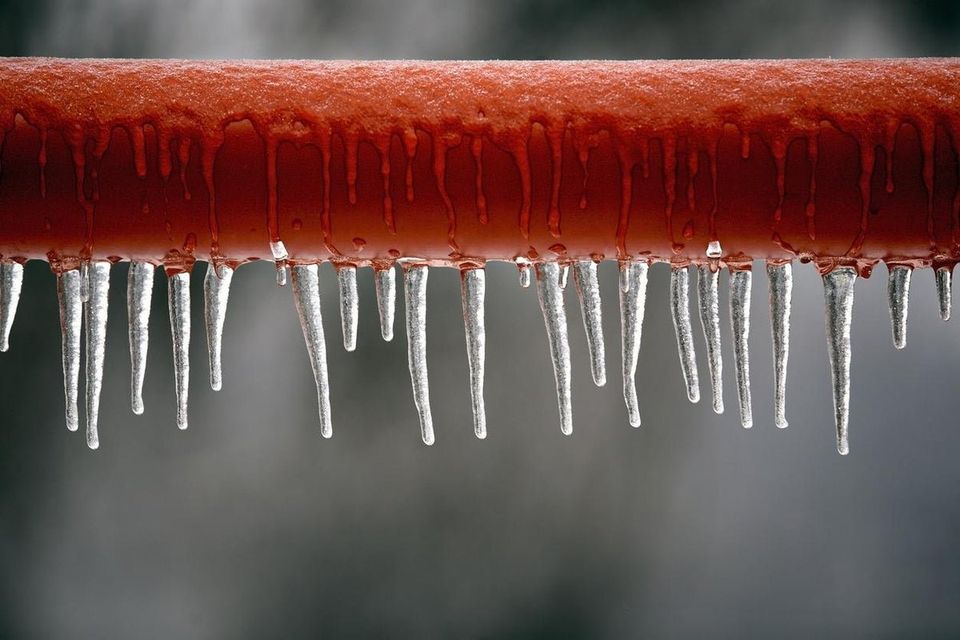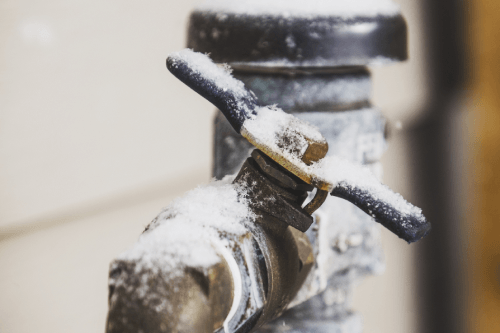The article author is making a number of good points on the subject of How To Avoid Freezing Pipes as a whole in this great article directly below.

Cold weather can wreak havoc on your plumbing, particularly by freezing pipes. Below's just how to prevent it from occurring and what to do if it does.
Intro
As temperature levels decrease, the risk of icy pipes increases, possibly bring about pricey fixings and water damages. Comprehending how to prevent frozen pipelines is essential for house owners in cold climates.
Prevention Tips
Shielding susceptible pipes
Cover pipelines in insulation sleeves or utilize warmth tape to safeguard them from freezing temperatures. Concentrate on pipelines in unheated or exterior areas of the home.
Home heating methods
Maintain interior areas adequately heated, particularly locations with plumbing. Open cupboard doors to permit cozy air to distribute around pipes under sinks.
Just how to recognize frozen pipelines
Try to find reduced water flow from taps, unusual smells or noises from pipes, and noticeable frost on subjected pipes.
Long-Term Solutions
Structural changes
Think about rerouting pipelines far from outside wall surfaces or unheated areas. Add added insulation to attics, cellars, and crawl spaces.
Updating insulation
Purchase high-quality insulation for pipelines, attic rooms, and wall surfaces. Appropriate insulation aids preserve regular temperatures and minimizes the threat of frozen pipes.
Securing Exterior Plumbing
Garden hose pipes and outside taps
Disconnect and drain pipes yard pipes before winter season. Set up frost-proof faucets or cover outdoor faucets with shielded caps.
Understanding Icy Pipelines
What triggers pipelines to freeze?
Pipes ice up when exposed to temperatures listed below 32 ° F (0 ° C) for prolonged periods. As water inside the pipes freezes, it broadens, putting pressure on the pipe walls and possibly causing them to rupture.
Risks and damages
Frozen pipes can lead to water disturbances, home damage, and costly repair services. Ruptured pipes can flood homes and trigger extensive architectural damage.
Indications of Frozen Pipeline
Recognizing frozen pipelines early can stop them from bursting.
What to Do If Your Pipelines Freeze
Immediate actions to take
If you think icy pipelines, keep faucets open up to relieve stress as the ice melts. Use a hairdryer or towels taken in hot water to thaw pipelines slowly.
Verdict
Stopping frozen pipelines requires aggressive procedures and quick actions. By understanding the reasons, signs, and preventive measures, homeowners can safeguard their pipes throughout cold weather.
5 Ways to Prevent Frozen Pipes
Drain Outdoor Faucets and Disconnect Hoses
First, close the shut-off valve that controls the flow of water in the pipe to your outdoor faucet. Then, head outside to disconnect and drain your hose and open the outdoor faucet to allow the water to completely drain out of the line. Turn off the faucet when done. Finally, head back to the shut-off valve and drain the remaining water inside the pipe into a bucket or container. Additionally, if you have a home irrigation system, you should consider hiring an expert to clear the system of water each year.
Insulate Pipes
One of the best and most cost-effective methods for preventing frozen water pipes is to wrap your pipes with insulation. This is especially important for areas in your home that aren’t exposed to heat, such as an attic. We suggest using foam sleeves, which can typically be found at your local hardware store.
Keep Heat Running at 65
Your pipes are located inside your walls, and the temperature there is much colder than the rest of the house. To prevent your pipes from freezing, The Insurance Information Institute suggests that you keep your home heated to at least 65 degrees, even when traveling. You may want to invest in smart devices that can keep an eye on the temperature in your home while you’re away.
Leave Water Dripping
Moving water — even a small trickle — can prevent ice from forming inside your pipes. When freezing temps are imminent, start a drip of water from all faucets that serve exposed pipes. Leaving a few faucets running will also help relieve pressure inside the pipes and help prevent a rupture if the water inside freezes.
Open Cupboard Doors
Warm your kitchen and bathroom pipes by opening cupboards and vanities. You should also leave your interior doors ajar to help warm air circulate evenly throughout your home.

Do you like reading about 6 Ways to Prevent Frozen Pipes? Put a short review further down. We'd be glad to know your suggestions about this entry. We are looking forward to see you back again soon. For those who liked our blog entry please remember to share it. We treasure your readership.
Click Here!